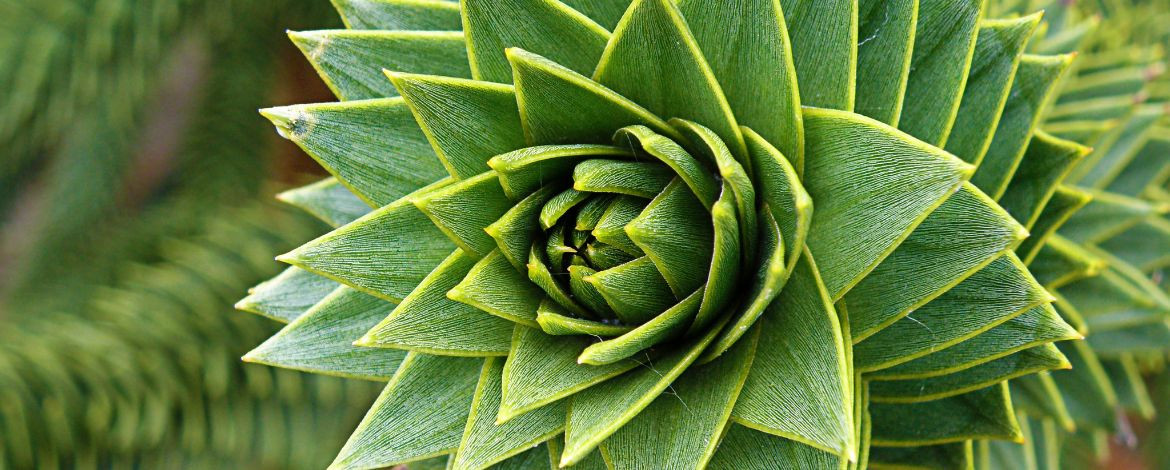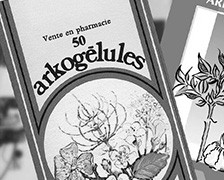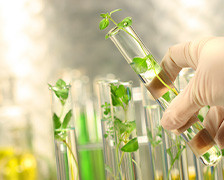Plants: complex, living things

The living unit: from the animal cell to the plant cell
Plants, along with animals and fungi, belong to the large group of multicellular organisms that have nuclei and mitochondria within their cells: organisms known as eukaryotes. The majority of researchers believe that the fossils thought to be the oldest eukaryotes are 2.1 to 2.7 billion years old.
The animal cell first appeared after absorption by a primitive cell of a bacterium to create an organelle, the mitochondrion. The animal cell has to feed on pre-existing organic components, and it is therefore called “heterotrophic”.
The plant cell was formed in a different period around 1.6 billion years ago by the additional absorption of a photosynthetic blue-green algae (cyanobacterium) by an animal cell, to become in turn another organelle, the chloroplast. This new cell able to produce its own organic matter—referred to as “autotrophic”—from mineral salts drawn from the soil and carbon dioxide assimilated using solar energy, gave birth to the phylogeny of the green line.
| So, up to a certain point, plants share common cellular characteristics with animals, and the study of their behavior within ecosystems seems to indicate that they should not “turn green with envy” at their distant cousins.
The main characteristics of plants
As previously mentioned, plants, in contrast to animals and fungi, are organisms capable of producing organic matter thanks to the mechanism of photosynthesis that occurs in chloroplasts, with the help of green pigments (chlorophylls). Plant cells also differ from animal cells by the presence of an additional cellulose wall around each of them and certain specific molecules such as lignin which makes the tissues rigid.
Furthermore, these organisms are fixed to the ground by their root system. This makes them very dependent on the conditions of their environment. This fixedness means they have had to develop a great many strategies for dealing with the variations in their living environment, unlike animals who are able to flee in times of upheaval.
| As a result, rice has more than 50,000 genes, while humans have around 26,000. According to Francis Hallé, a botanist specializing in the ecology of tropical rainforests “if rice has twice as many genes as humans, this clearly shows that it is basically more complex.”
The role of plants within ecosystems
Plants form the basis of the food chain, which gives them a fundamental role in the overall functioning of the biosphere. They are called “primary producers” because they are able to produce their own organic matter via photosynthesis. Whether on land or in water, plants are at the origin of any food chain.
| It is worth remembering that human life depends entirely on plants, not only for the provision of oxygen, but to satisfy our energy needs in the form of fossil fuels accumulated over millions of years, and to provide medicines and food.
Sensory properties, memory and communication in the plant world
Plants perceive the stimuli of the environment (rain, wind, cold, heat, attacks from herbivores or pathogens, and so on) and remember for a sufficiently long period, not these stimuli as such but rather the type of reaction they should have. This capacity is a precious asset enabling plants to produce a response adapted to all these stimuli and their fluctuations. If a plant perceives a stimulus to which it has previously been subjected, its response will be stronger.

At the same time as the first studies into plant memory, in the early 1980s, a biologist and a chemist, Jack Schultz and Ian Baldwin, opened the way for discovering chemical communication between plants through their work published in the prestigious scientific journal “Science” [Baldwin 1983].
Thus, gradually, over the last three decades, a hidden complexity in the plant world has been brought to light thanks to technological progress in recent years, and the persistence of researchers who reject dogmatic positions. New fields of study have emerged such as those of plant neurobiology and plant intelligence.
“When people are ready to consider that plants are not passive things, like furniture, but highly sophisticated and evolved organisms, then they will respect them.”
Stefano Mancuso, University of Florence (Italy)
Bibliography:
Baldwin IT, Schultz JC. Rapid changes in tree leaf chemistry induced by damage: evidence for communication between plants. Science 1983;221:277-9.
Baluska F, Mancuso S. Plant neurobiology. Plant Signal Behav 2009;4:475-6.
Campbell N, Reece J, Urry L, Cain M, Wasserman S, Minorsky P, Jackson R. Biologie, 9ème ed. Pearson Education, 2012.
Margulis L. Origin of eucaryotic cells. Yale University Press, 1970.
Thellier M, Desbiez MO, Champagnat P, Kergosien Y. Do memory processes occur also in plants ? Physiol Plant 1982;56:281-4.
Thellier M. Les plantes ont-elles une mémoire? Quae, 2015.
Vian A, Stankovic B, Davies E. Signalomics: Diversity and Methods of Analysis of Systemic Signals in Plants. In: Plantomics: the omics of plant science. Springer, 2015:459-490.




